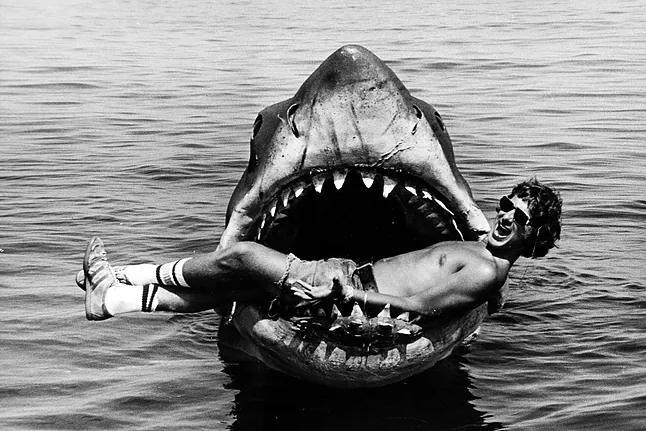Jackie Kennedy and Patricia Neal had their summer vacations ruined in Martha's Vineyard, especially the actress who lived in the coastal town of Edgartown. In 1974, the technical and artistic team of Shark, led by Steven Spielberg (78), filmed on the elite island on the east coast of the United States, which in the film is called Amity Island, the first blockbuster or summer hit in the history of cinema.
When the movie premiered in the United States on June 20, 1975, it was shown on 490 screens and grossed over 100 million dollars in 78 days. Globally, it reached 476.5 million. Not bad considering the initial budget was 3.5 million dollars, which escalated to 9 million due to numerous problems, turning a planned 55-day production into 159 days. A new book, Shark (Notorious Ediciones), gathers all the anecdotes of the famous movie on its 50th anniversary.
The most significant challenge during filming was related to the construction of the huge shark, which Steven Spielberg named Bruce in honor of his lawyer, who also represented George Clooney and Clint Eastwood. Initially, the producers David Brown and Richard Zanuck - son of the owner of 20th Century Fox - believed they could train a real great white shark to perform simple tricks and then use miniatures for the rest of the plot. Obviously, that absurd idea was discarded.
Production designer Joe Alves hired special effects creator Robert A. Mattey to build three replicas of a great white shark in a boat hangar. Each one weighed 1.2 tons, measured 7.5 meters long, and cost 250,000 dollars. They were constructed with a steel skeleton covered with polyurethane foam and fiberglass painted with silica sand to give it a texture similar to real shark skin, allowing for better movement.
Inside, there were about 152 meters of plastic tubes, 25 remotely controlled valves, and 20 electric and pneumatic hoses providing power. These mechanisms, operated by twenty technicians, allowed the shark to move its jaws, eyes, and fins.
The first version immediately sank to the ocean floor as it had only been tested in freshwater, and when submerged in saltwater, it deteriorated. The second replica faced continuous incidents as the saltwater damaged the metal and circuits; the skin cracked under water pressure and bleached in the sun, requiring weekly renewal. The spongy material absorbed water, causing the piece to swell and sometimes get entangled in seaweed. With so many setbacks, Spielberg ended up nicknaming the shark "the big white turd."
The third replica was a head recreation without any mechanical mobility, used only for the scene where the shark jumps out of the water after its confrontation with Martin Brody (Roy Scheider). For the action scenes, a strategic area near the coast was chosen to create the illusion of being at sea for the confrontation between the shark and the Orca (Quint's boat).
There are two key moments in the narrative to enhance suspense, fear, and anxiety. Firstly, the shark does not appear until the 81st minute of the 124-minute film. Secondly, there is John Williams' music, where he created a simple soundtrack with the sequence of the notes E and F, repeated to build tension and threat. When the composer showed it to Spielberg, he said, "That's funny, John, really; but what did you have in mind for the Shark theme?" Later, the director confirmed that without that music, the film would have only been half as successful.
During filming, Roy Scheider improvised the line "You're gonna need a bigger boat," which became one of the most quoted slogans in cinema history, almost on par with "We'll always have Paris" from Casablanca. Scheider had his ups and downs with Robert Shaw (Quint), who spent a good part of the film drunk.
Spielberg avoided hiring big stars to prevent them from overshadowing the plot and paid the minimum without crossing union boundaries. The extras from Edgartown were paid 64 dollars a day to scream and run.
